Introduction
Chili de Árbol peppers have a Scoville Heat Unit (SHU) rating of 15,000 to 30,000, placing them moderately hot compared to other chili peppers. Native to Mexico and commonly used in traditional dishes like salsas and soups, this vibrant red beauty packs a punch. But how much of a punch exactly? Let's find out what makes the chili de árbol Scoville rating such a fiery talking point among spice enthusiasts and chefs alike.
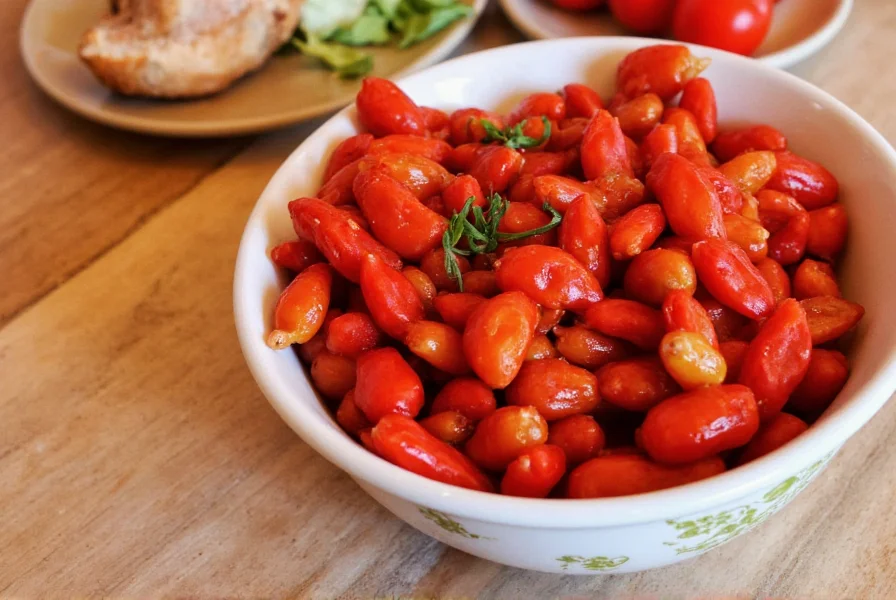
What is the Scoville Scale?
Invented by pharmacist Wilbur Scoville in 1912, the Scoville scale measures the spiciness or capsaicin content in chili peppers. The higher the number, the hotter the pepper. Originally tested using human tasters diluting pepper extracts until the heat was undetectable, today's method uses high-performance liquid chromatography (HPLC) for accuracy.
Capsaicin is the compound responsible for that burning sensation we love (or fear), and while it can vary between individual peppers, average Scoville ratings give us a reliable guide for choosing the right level of heat for our recipes — or daredevil eating contests.
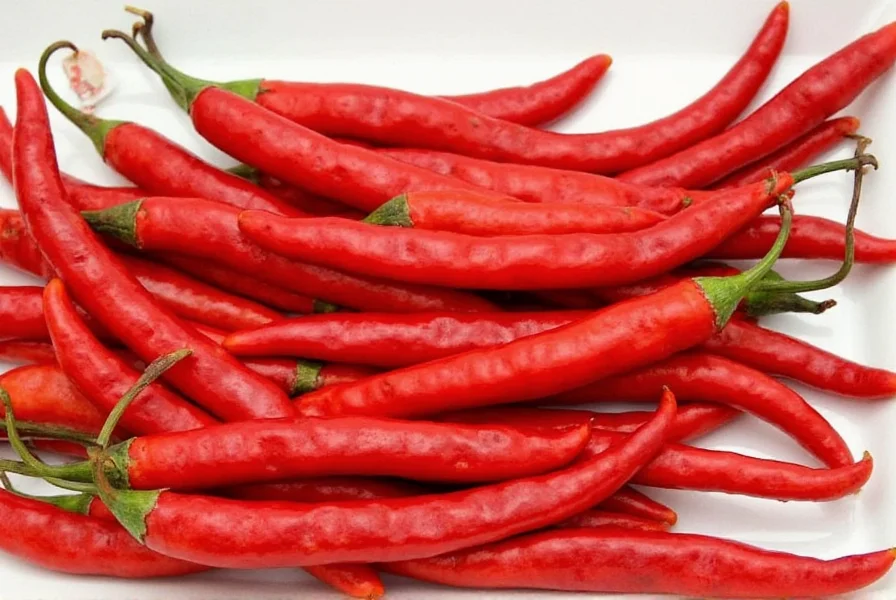
Chili de Árbol Scoville Rating: How Hot is It?
The chili de árbol Scoville rating typically falls between 15,000 to 30,000 SHU (Scoville Heat Units). For context, that places it well above jalapeños (which range from 2,500 to 8,000 SHU), but still below hotter peppers like the cayenne (30,000–50,000 SHU) or habanero (100,000–350,000 SHU).
| Pepper | Scoville Heat Units (SHU) |
|---|---|
| Bell Pepper | 0 |
| Jalapeño | 2,500 – 8,000 |
| Chili de Árbol | 15,000 – 30,000 |
| Cayenne | 30,000 – 50,000 |
| Habanero | 100,000 – 350,000 |
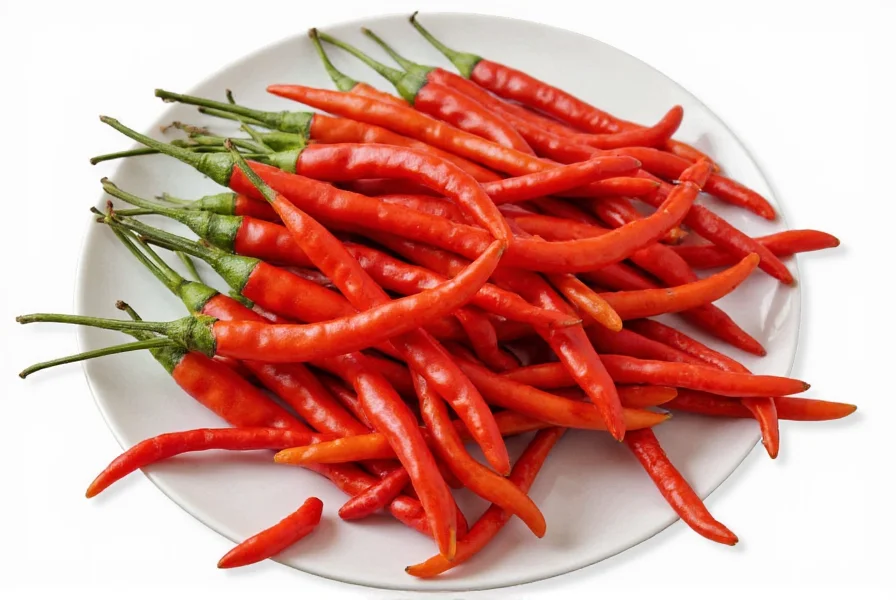
Its slender, upright shape and bright red color make it easy to spot in markets. Don't let its delicate appearance fool you — the chili de árbol delivers a clean, sharp heat that builds quickly and lingers just long enough to keep your taste buds dancing.
Flavor Profile and Culinary Uses
Beyond its impressive Scoville score, the chili de árbol is beloved for its rich flavor profile. Think of it as the fiery cousin with a refined palate — nutty, smoky, and slightly citrusy notes round out the experience.
- Perfect for making homemade salsas, especially roasted tomato-based varieties
- Adds depth to soups and stews when toasted and blended
- Excellent for oil infusions and chili powders
Chefs often toast these peppers before grinding them to unlock their full aromatic potential. Just remember — a little goes a long way!
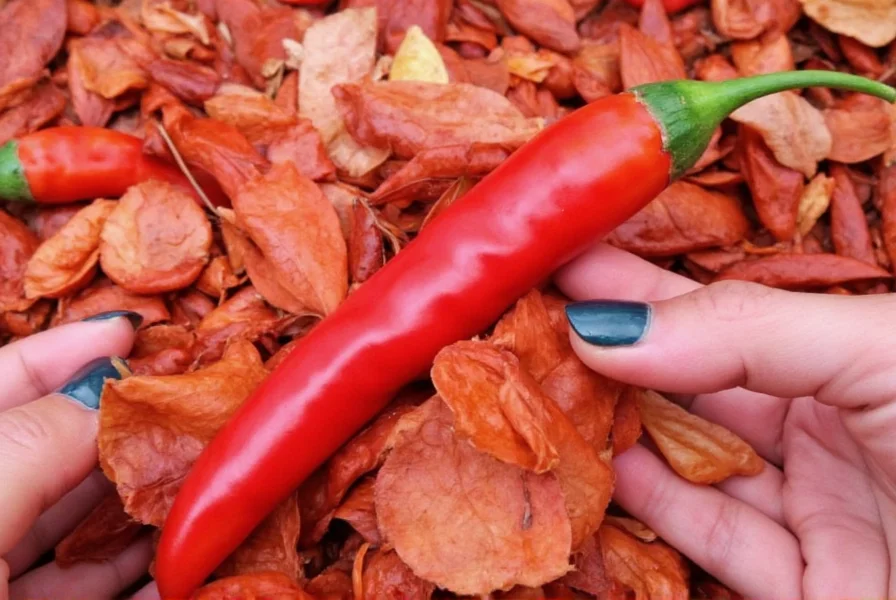
How Does it Compare? Chili de Árbol vs Other Peppers
If you're trying to figure out where chili de árbol fits in your spice arsenal, here's a quick comparison chart to help you decide:
| Feature | Chili de Árbol | Jalapeño | Cayenne | Habanero |
|---|---|---|---|---|
| Heat Level | Moderate-High | Mild-Moderate | High | Very High |
| Flavor Notes | Nutty, Citrusy, Smoky | Grassy, Vegetal | Earthy, Sharp | Fruity, Floral |
| Ideal Use | Salsas, Oil Infusions | Tacos, Nachos | Spice Blends, Sauces | Salsas, Desserts |
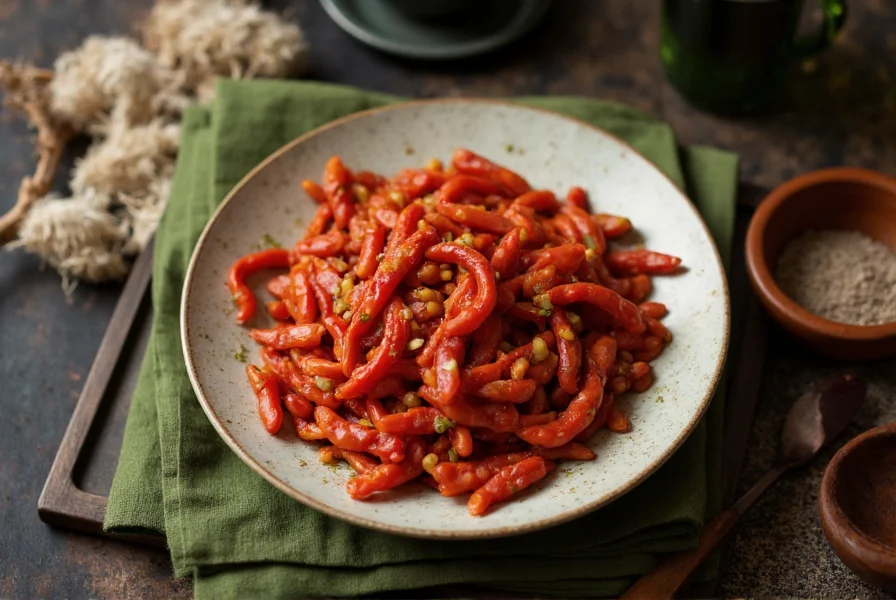
Buying Guide: Picking the Perfect Chili de Árbol
Whether you're picking up fresh peppers at the market or buying dried ones online, knowing what to look for ensures you get the best quality and flavor.
Features to Look For:
- Color: Vibrant red indicates ripeness and stronger flavor
- Texture: Dried peppers should be brittle but not overly dry; fresh ones should be firm and glossy
- Smell: A slight peppery aroma means freshness
- Source: If buying online, opt for reputable spice sellers who provide details on origin and processing
Top Products to Try:
- MexiFire Organic Dried Chili de Árbol Pack: Ideal for making pastes and powders. Great for serious home cooks and professional kitchens.
- La Flor Chile de Árbol Whole Dried Peppers: Traditional Mexican brand known for consistent quality and bold flavor.
- ChiliCraft Premium Ground Chili de Árbol: Pre-ground for convenience without sacrificing potency. Perfect for quick spice boosts in meals.

Use these in anything from taco seasoning blends to homemade hot sauces. They're also great for infusing oils or vinegars for gourmet finishing touches.
Top 5 Ways to Use Chili de Árbol in Your Kitchen
Ready to bring some heat and flavor to your meals? Here are five delicious ways to incorporate chili de árbol into your everyday cooking:
- Make a Fiery Salsa: Toast the peppers, blend with tomatoes, onions, garlic, and cilantro for an unforgettable salsa.
- Infuse Oils: Heat dried chilies in olive oil over low flame for 10 minutes, strain, and drizzle over pizza or pasta.
- DIY Spice Mix: Combine ground chili de árbol with smoked paprika, salt, and lime zest for a versatile seasoning.
- Add Depth to Soups: Crush a few dried chilies and add them to broth-based soups or bean pots during simmering.
- Hot Honey Magic: Infuse honey with chili de árbol for a sweet-and-spicy glaze on grilled meats or cheese boards.

Handling Heat: Safety Tips for Using Spicy Peppers
Let's face it — sometimes chili de árbol can surprise even seasoned cooks. To avoid tears (and worse), follow these practical tips:
- Wear gloves: Capsaicin can irritate skin and eyes. Gloves are your best friend.
- Avoid touching your face: Especially after cutting open a chili. Trust us.
- Rinse hands in milk: Water won't help — milk neutralizes capsaicin better than anything.
- Store safely: Keep dried chilies in sealed containers away from light and moisture.
- Kitchen ventilation: Work near a vent or open window to reduce inhaling irritating fumes.
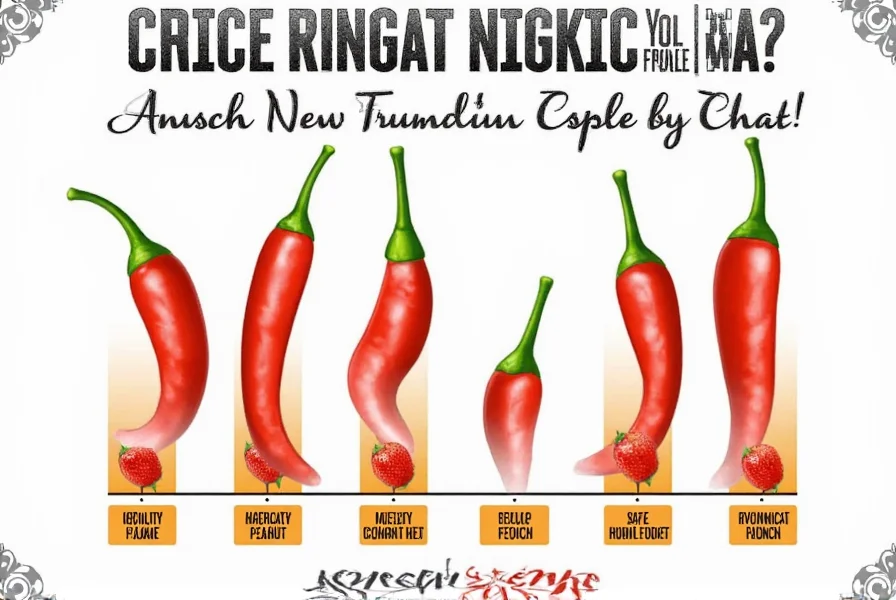
Frequently Asked Questions About Chili de Árbol
What is the exact Scoville rating of chili de árbol peppers?
Chili de árbol peppers typically measure between 15,000 to 30,000 Scoville Heat Units (SHU). This places them significantly hotter than jalapeños (2,500-8,000 SHU) but milder than cayenne peppers (30,000-50,000 SHU) or habaneros (100,000-350,000 SHU).
How does chili de árbol compare to other common peppers in heat level?
Chili de árbol is about 2-12 times hotter than a jalapeño, similar in heat to cayenne (though slightly milder on average), and about 3-23 times milder than a habanero. It's hotter than serrano peppers (10,000-23,000 SHU) but not as intense as Thai bird's eye chilies (50,000-100,000 SHU).
What does chili de árbol taste like beyond just being hot?
Beyond its notable heat, chili de árbol offers a complex flavor profile with nutty, smoky, and slightly citrusy notes. Unlike some hotter peppers that have fruity flavors, chili de árbol delivers a cleaner, sharper heat that builds quickly and has a pleasant lingering warmth.
Can I substitute chili de árbol with other peppers in recipes?
Yes, but with caution. Good substitutes include cayenne pepper (similar heat but different flavor), serrano peppers (milder with grassier flavor), or a combination of jalapeño and a pinch of cayenne. When substituting, start with less than the recipe calls for and adjust to taste, as heat levels can vary significantly between pepper varieties.
Are dried chili de árbol peppers hotter than fresh ones?
Actually, dried chili de árbol peppers often have a more concentrated flavor, but the heat level remains relatively consistent. The drying process concentrates flavors but doesn't significantly increase capsaicin content. Many chefs prefer using dried árbol peppers because they're available year-round and their flavor deepens when toasted before use.
How should I handle chili de árbol peppers safely?
Always wear gloves when handling chili de árbol peppers, as their high capsaicin content can cause skin irritation. Avoid touching your face, especially eyes, and wash hands thoroughly with soap or milk (not just water) after handling. When cooking with them, ensure good ventilation as the fumes can be irritating.
What's the best way to store chili de árbol peppers?
Fresh peppers should be stored in the refrigerator in a paper bag for up to 2 weeks. Dried peppers keep best in airtight containers in a cool, dark place for 6-12 months. For longer storage, dried peppers can be kept in the freezer. Ground chili de árbol loses potency faster, so buy whole peppers and grind as needed for best flavor.
Conclusion
The chili de árbol Scoville rating tells only part of the story. This versatile pepper isn't just about heat — it's a powerhouse of flavor, texture, and tradition. Whether you're a home cook experimenting with new cuisines or a spice enthusiast chasing that perfect burn, the chili de árbol deserves a spot in your pantry.
So next time you reach for the spices, don't shy away from this little red dynamo. Embrace the heat, enjoy the flavor, and let your inner spice hero shine.












 浙公网安备
33010002000092号
浙公网安备
33010002000092号 浙B2-20120091-4
浙B2-20120091-4